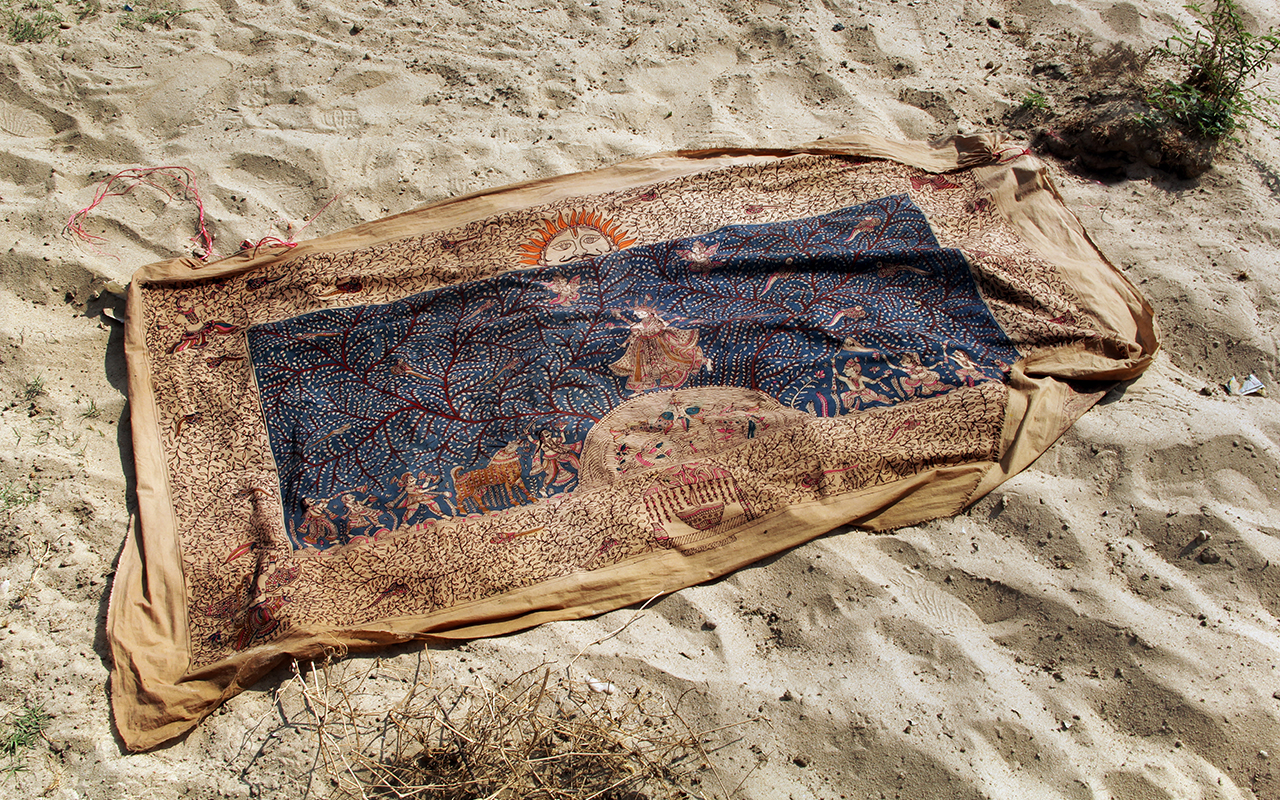Accession card
Description
The art form of Mata Ni Pachedi is something that I had not come across before; it was awe-inspiring not only for its complex design, meticulous patterns and precision of practice, but the story of the community of makers and users.
“The Vagharis were nomads who lived along the edges of the Sabarmati River in Gujarat. Cultivators and agricultural workers, they also sold or exchanged old goods. Around 300 years ago, they became artists and creators of Mata ni Pachedi, an impressive form of textile art that serves the purpose of a shrine for the marginalised and excluded, of whom they were also a part of”.
The relationship of the ‘nomad’ within their natural and built environments and how this relationship is expressed through temporary, communal, flexible, inventive spaces challenges the sedentary bias in western architecture and its tendency to privilege monumental, permanent, static structures. This is about architecture as the practice of creating environments and marking space through relationships, ideas and actions, prioritising the creative process rather than the product.
Nomadic spaces are often overlooked by authorities and governments, sometimes they are purposefully rendered invisible and as a result, their spatial structures are often determined within self-created structures within the specific communities.
These structures speak of the land that they sit upon, of resources (social and physical), of the needs, values and politics of the people who spend their lives moving through and creating spaces. Nomadic people are particularly interesting in this regard as they create communities and build remarkable structures quite different from those of the settled majority.
The Mata ni Pachedi functions not only as the spatial parameters of the temple; the ceilings and the walls that can be packed away and moved as required, but also as a way of protecting the temple from destruction by outsiders. The fabric is considered more secure than hard materials such as clay, bricks and mortar that can be destroyed. The goddesses and religious symbols are painted on the fabric to ensure that outsiders do not break the object, disrespecting the deity. If the fabric is tainted, the artisan can touch it up and fix the ruined area.
Through this practice, we see that there is the challenging of what is considered sites for prayer and worship. The scale of the cloth is intimate and sensual - a relationship between the deity and the worshiper. An intimacy that is also extended to the way that the craft is thought and learnt, between master and apprentice. The inter-generational, inherited knowledge that is passed down from father to son is scared, passing on a practice, understanding the importance of adhering to the regulations, rites and rituals.
Code
Date
Credits / copyrights
Title
Medium
- Image



